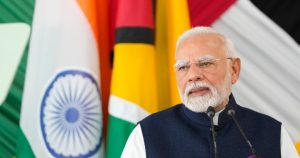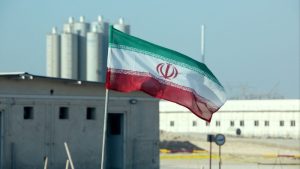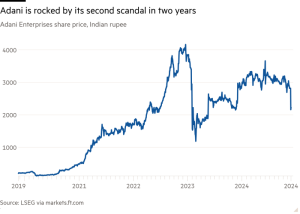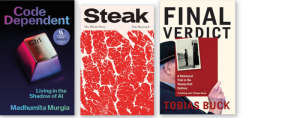is Kamala Harris or Donald Trump leading the US presidential race?
Unlock the US Election Countdown newsletter for free
The stories that matter on money and politics in the race for the White House
After $2.8bn spent on campaigning, two assassination attempts, the withdrawal of a president from his re-election bid, two highly consequential debates and endorsements ranging from Taylor Swift to Hulk Hogan, Americans are still evenly split over who their next leader should be.
With just one week left in the most tumultuous White House race in modern political history, Kamala Harris and Donald Trump appear deadlocked — evidence either of a fundamental fracture in US politics or a colossal miss by pollsters that will only be known after voting ends on November 5.
Here’s what to know about the race in its final stretch.
What do the polls say?
Nationally, Harris has a bare 1 percentage point lead over Trump, according to poll tracking by the Financial Times. But national polling is by no means decisive in the presidential election because the winner is decided in the Electoral College. In 2016, Hillary Clinton won far more votes nationally than Trump, but he won more of the crucial swing states, and therefore the White House.
The race is tight in these pivotal battlegrounds. Trump, on the back of marginal gains in recent polling, holds slender leads in six of the seven states, but four of the leads are within half a percentage point, well within the margin of error.
The biggest prize is Pennsylvania, the most populous of the swing states, with the biggest number of Electoral College votes at stake. Both parties have in recent months registered and motivated voters there and spent a total of $388mn on advertisements.
FT Edit
This article was featured in FT Edit, a daily selection of eight stories to inform, inspire and delight, free to read for 30 days. Explore FT Edit here ➼
But it, too, is on a knife-edge, and whichever candidate wins Pennsylvania would have about a 90 per cent chance of winning the presidency, according to prediction models.
Unsurprisingly, polls-based models see the race itself as a coin toss. Three prominent predictors — FiveThirtyEight, The Economist and Silver Bulletin — all list Trump as a 53 per cent favourite. Newly popular prediction markets favour Trump, at about 60 per cent, but these markets have been influenced by a tiny number of outsize traders, according to data analysed by the FT.
How does the race compare with 2016 and 2020?
In 2016 and 2020, Trump trailed his opponents Clinton and Joe Biden, respectively, by wide margins heading into election day but outperformed national polls in both instances. This year, he is behind by a much slimmer margin.
The Harris campaign is still optimistic that it can eke out a victory by not underestimating Trump’s appeal and campaigning in all the crucial battleground states. Clinton barely campaigned in Wisconsin, for example, and lost the state by a sliver.
Harris also hopes that pollsters who underestimated Republican support are now overestimating it, as they did in the 2022 midterm elections, when Democrats over-performed polls.
That was seen as a reaction to the Supreme Court’s ruling to strike down abortion rights and concerns about extremist pro-Trump Republican candidates. It is a theme Harris is pushing this time, too.
The vice-president has adopted a different approach from Clinton and Biden with a clear appeal to the political middle.
She has not emphasised her history-making potential to be the first woman president and commander-in-chief as Clinton did. She is not proposing new large government spending programmes on the scale Biden proposed. She has also taken a tougher stance on immigration, trying to neutralise one of Trump’s attack lines.
Who is ahead on voters’ most important issue?
The standout issue in the campaign has been the economy, especially inflation and the high cost of living, which have been consistently cited by voters in the FT-Michigan Ross poll over the past year.
In the final poll, conducted in mid-October, Trump regained a marginal lead over Harris on the question of which candidate voters trusted more to handle the economy, with the Republican at 44 per cent and the Democratic vice-president at 43 per cent.
What does the early voting indicate?
More than 40mn Americans — likely about a quarter of the total vote — have already cast their ballots through mail-in and early-voting schemes. This is well below the pandemic-stricken 2020 election but on track to surpass 2016.
In the states that provide data, 40 per cent of early votes have been cast by registered Democrats and 36 per cent by registered Republicans, but election experts caution that such early breakdowns are not predictive of the final result.
Who is spending more?
The race will be the most expensive presidential campaign in history, with a total of $3.8bn raised as of mid-October, according to an FT analysis of financial filings.
Democrats, including pro-Biden and Harris groups, have raised more — $2.2bn versus pro-Trump groups’ $1.8bn since the beginning of last year. Democrats have also ridden a record wave of small-donor support, especially after Harris replaced Biden on the ticket in the summer. Billionaires have accounted for more than a third of the money donated to Trump groups, with just four people giving $432mn.
Harris has also spent more on advertisements and in every swing state. These ads will continue to blanket the battleground states in the remaining days, as the candidates make their closing arguments.
In mid-October, Harris had $261mn of cash on hand and Trump groups had $241mn. Both are still fundraising, leaving them with a lot of firepower to spend in the final seven days.
Additional reporting by Sam Learner in New York
#Kamala #Harris #Donald #Trump #leading #presidential #race












